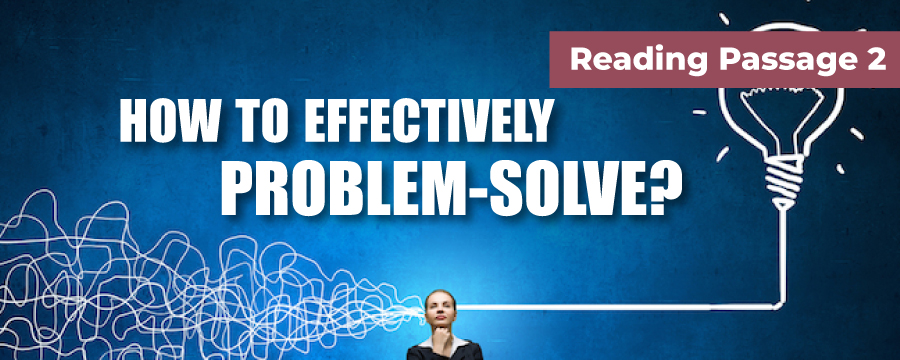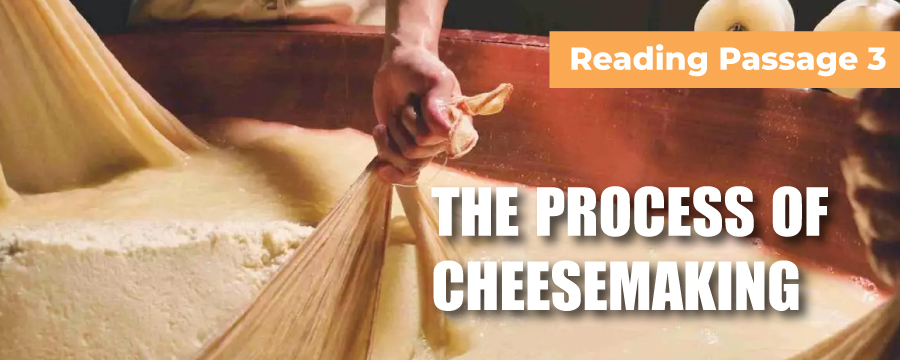Part 1
READING PASSAGE 1

How your breakfast habits may reveal more about you than you realiseIncredible though it may seem, your breakfast habits may reveal your innermost personality. At least, that's according to a recent study jointly commissioned by Duerr's Marmalade and Robert's Bakery. The study uncovered 15 personality types in all, ranging from 'Thrill-Seeker' and 'Perfectionist' to the more eyebrow-raising 'Status Quo Lover' and 'Tribal Chief'. Quite what the latter 2 types are exactly is left to speculation. The test itself was the brainchild of Dr. Sandi Mann, Senior Lecturer in Psychology at the University of Central Lancashire. Apparently the reasoning, for there is one, behind the test IS that subconscious motives prompt even the simplest of choices. 'How we eat our toast and marmalade might seem intuitive but the fact is we each individually make a series of choices at breakfast, based on learnt preferences, innate behaviour and conditioned learning, which could underscore your personality type/ claims Dr. Mann. Key factors analysed in the test were butter-spreading techniques, amount of butter applied and the subject's conserve of choice. Certainly, Mann's analysis makes for interesting reading. In particular, a handful of personality types had intriguing breakfast habits that in most cases were somewhat predictable in hindsight. 'Perfectionists', for example, gave themselves primarily away by their butter-spreading techniques. Those falling into the Perfectionist category ensured total coverage of toast when spreading it with butter. 'Intolerant' types, however, first removed crusts before eating, whilst so-called 'Achievers' tended to be a sloppy bunch preferring to dip their butter knives in the jam and eat the crusts on their bread. Finally the 'Thrill-Seekers' were the ones who always went for the novelty jams on offer. If you have not yet identified your personality type from any of the above, you can reveal your innermost character traits by doing the online version of this test to find out where you sit on the scale. Have fun and Bon Appetit! |
Part 2
READING PASSAGE 2

How to effectively problem-solve
A _In life we can sometimes be overwhelmed by problems. The reason behind this is that we wait for problems to find us. We would do far better to take a proactive approach, actively seeking out potential problems and deciding on which are worth tackling in the first place and taking appropriate action. B _Next, one has to resist the temptation of going straight into problem analysis and solution. As with the first step, this stage is one of the secrets of effective problem-solving. Having already decided upon what problems are worthwhile solving, at this stage, you need to establish what exactly you are trying to solve. C _Now you are ready to get down to work on actually tackling the problem you have identified. You need to break down the complexity of the problem, stripping away the superficial and getting to the causes/issues. Whilst this may take some time and thought, in the long run you will reap the benefits of spending time in this more contemplative stage of the process. D _There are always more than one ways to solve a problem, so take time to create and work upon plenty of creative possibilities to the problem. Think of it as a personal brainstorming session. However ludicrous a solution may seem initially, write it down nevertheless. You never know how effective a solution will be anyway until it is put into practice. E _Next you need to make choices. You need to weigh up the relative merits and risks of the different options you generated in the previous step and decide which to go for. This is more of a filtering stage where you weed out the solutions that are less likely to work from the more plausible options. F _Deciding on which course of action to take is only half the story, though. You need to carry the action through in an effective way if you are to deliver the outcomes essential to solving the problem you originally defined. G _Hopefully once you have reached this stage your problem is now a thing of the past. Before you give yourself a well-deserved pat on the back though, it is worth taking time out to reflect on what you have achieved so far and whether you in fact arrived at the anticipated outcome you had hoped for. Any perceived failings on your part in implementing the steps can then be addressed, allowing you to take more effective action in problem-solving situations in the future. |
The function and definition of playPlay can be defined by three basic criteria: an expression of freedom of choice, personal enjoyment and an activity that is an end in itself. Its persistence through the ages and across diverse cultures demonstrates its functional role in human survival and development. In a nutshell, play serves to develop social and cognitive abilities as well as acting as a form of self-expression. Within the activity of play itself there are several clearly defined types. These types range from simple physical play with objects such as baby rattles, to more complex cognitive play in games with many rules, such as cards or chess played by older children. At the most basic end of the play continuum is passive play. Children exhibiting passive play behaviours are not involved physically in any play activity themselves. When play behaviour is exhibited by other children in their presence, they may be virtually oblivious to it, or they may observe but not participate, exhibiting 'onlooker behaviour'. At a more engaged level, children will exhibit involved play behaviours. To what extent this is a social activity varies greatly, depending on where the child is on the socio-developmental spectrum. At one end of the spectrum a child may be actively involved in play but alone or in parallel to other players. In both cases the child does not interact with other children in play activity. As the child learns to engage more with other children socially, involved play behaviour will show acknowledgement but not complete interaction with other children in associative play and more complete engagement with other children in cooperative play which requires negotiation skills and turn talking. As a child develops language and vocabulary skills, pretend play will evolve. This type of play serves to increase memory abilities and enhances reasoning and problem-solving abilities. Children at this stage use imagination to overcome what adults would term 'problem-solving'. As cognitive abilities develop in a child, they will begin to engage in cognitive play. Here, at a more complex level of this stage, the child will play games with set rules, such as chess or jacks, as well as engaging in dramatic play that involves a degree of role play. At three to five years of age, when cognitive and social abilities are significantly more developed, a child will demonstrate socio-dramatic play. Role play is used and the child interacts with other children to narrate and act in stories with fluid storylines that they then act out together. |
Part 3
READING PASSAGE 3

The process of cheesemaking
When it comes to cheese we are spoilt for choice. From the milder cheeses such as Gouda and Emmental to the more pungent-tasting blue cheeses such as Danish Blue and Stilton, all tastes are catered for. Whilst cheeses may vary greatly in taste and texture, they are all manufactured following the same 6-stage cheesemaking process: acidification, coagulation, separating curds and whey, salting, shaping and ripening. There is more than an element of art in this process, however, since cheesemakers will temper the process according to their own senses of sight, touch and smell.
In the first stage, milk is inoculated with lactic acid bacteria. The purpose of the lactic bacteria is to convert milk sugar (lactose) into lactic acid in what is known as the acidification process.
Next, a substance that is known as rennet, which is obtained from the stomach lining of ruminants (or Cud-chewing herbivores, like cows), is used in the coagulation process causing milk protein to solidify. Rennet contains the active enzyme, rennin, and it is this enzyme that acts on the milk protein caseinogen to turn it into an insoluble milk protein known as casein. Since casein is insoluble, it precipitates out of the milk as a gel-like substance or curd, which contains milk solids, fats and proteins. The lactic acid added earlier on in the process facilitates the curdling process. As casein precipitates out from milk, forming curds, the watery substance left surrounding the curds is known as whey.
In the following stage, the insoluble curds are removed from the whey in the separation process. The curds are then removed and cut. Cutting encourages the curds to expel further liquid or whey, making them more solid as a result. Harder cheeses like Cheddar and Gruyere are created by being cut into small pieces. Conversely, softer cheeses like Camembert and Brie are hardly cut, creating a much softer texture.
Salt is then added to the cheese and serves a dual purpose both as flavour enhancer and preservative. It is important to preserve the cheese to avoid spoiling during long months or years of ageing cheese to produce a more mature flavour. How salt is added is up to the cheesemaker. Cheese may be fully immersed in a vat of brine, or salt may be rubbed onto the cheese rind. Another option is to add salt in the actual cheesemaking process itself.
Once the cheese is fully formed, it next has to be shaped. The cheese is placed into a basket or mould that will form the cheese into a specific shape. During this process any remaining liquid is removed by applying weights to the cheese to squeeze out the excess liquid.
Finally the cheese is left to ripen or age until it reaches its optimal ripeness. Close monitoring of the temperature where the cheese is stored is vital at this stage, otherwise the cheese will not develop the proper flavour and texture. According to the cheese being manufactured, the cheese will be subject to different processes at this stage. Mould is added to Brie cheeses by spray and by injection into blue cheeses. Other cheeses will need to be turned whilst others to be brushed with oil or washed with brine and alcohol.


